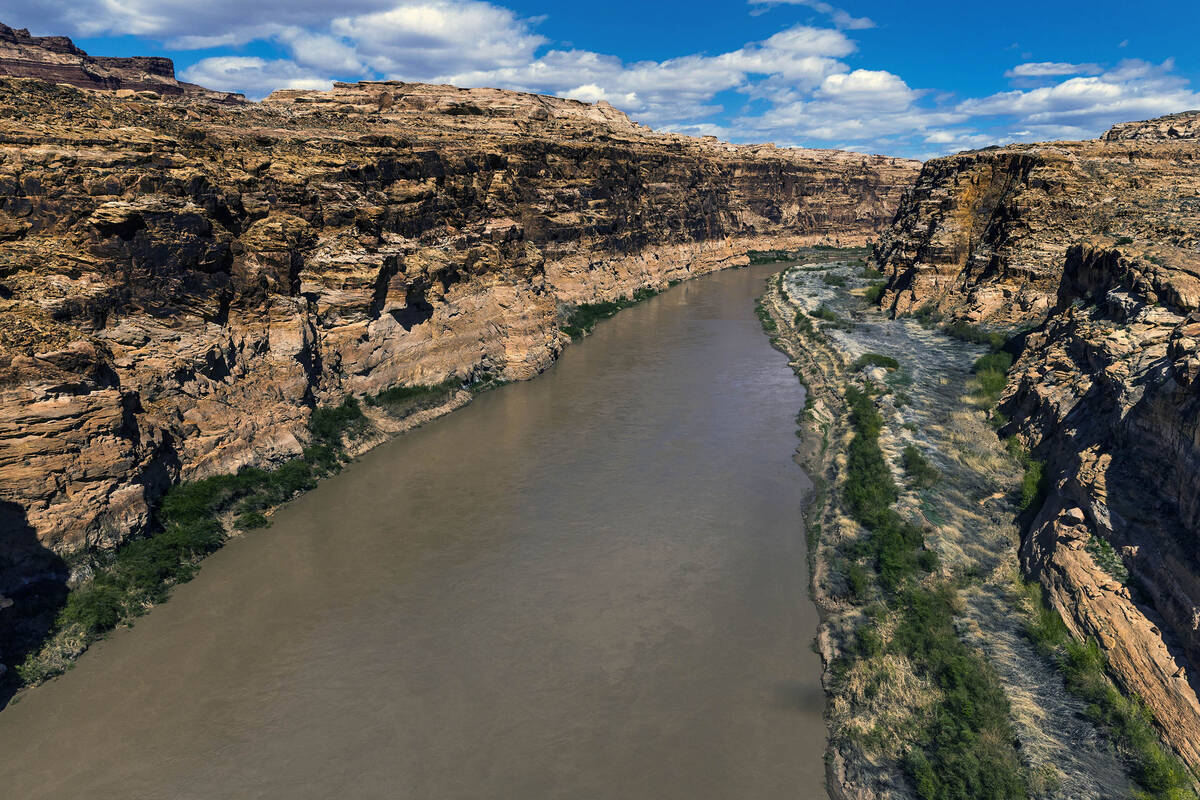EDITORIAL: Want to save Colorado River water? Look to farmers
A new study reveals that programs intended to reduce agriculture water use are the most effective means of stretching the Colorado River’s scarce resources. This should be self-evident but tends to get lost amid rhetoric about urban water consumption.
The analysis, by the Journal of the American Water Resources Association, examined more than $1 billion in spending covering scores of federal conservation efforts over the past two decades. The costs of saving an acre-foot of water in agriculture was as low as $70, while the price tag for new reservoirs or wastewater treatment plants intended to pad municipal supplies can be more than $2,000 per acre-foot.
“We want the dollars to deliver us the maximum water savings,” said Mehdi Nemati, one of the study’s authors and a professor at the University of California, Riverside. “This should be a little bit of a guide as to where we can save water with the lowest amount of money.”
The study reflects common sense. Agricultural interests use about 80 percent of the water drawn from the Colorado. Experts estimate that 56 percent of river water is used to grow water-intensive crops such as almonds and alfalfa, which is then used to feed cattle. A 2024 study by researchers at NASA’s Jet Propulsion Laboratory and UC Santa Barbara found that switching to less thirsty crops in California could cut the state’s water consumption by 93 percent.
That’s won’t happen given economic reality. Yet the researchers also concluded, CalMatters reported, that up to 20 percent savings could be realized by simply fallowing a small number of fields currently growing water-intensive crops and switching half the farms to crops that use an average amount of water.
“We potentially don’t need to be as extreme with our changes in order to save water in agriculture as we originally thought,” one of the study’s authors told the newspaper.
This highlights the problem with the common narrative that urban growth has led to the Southwest’s strained water supplies.
The Colorado River was severely over-allocated from the moment the seven-state compact governing water usage was implemented in 1922. Recent drought has further hampered supply. But pointing fingers at development in Las Vegas or Phoenix avoids the crux of the issue: agricultural uses of the Colorado and the ramifications of growing water-intensive crops in the desert.
Southern Nevada has made massive strides in water conservation in recent decades and now uses less water annually than it did two decades ago despite healthy population growth. While municipalities must continue to make improvements, any realistic plan for the Colorado moving forward must address the fact that farmers — not growing urban areas — devour most of what the river has to offer.

















